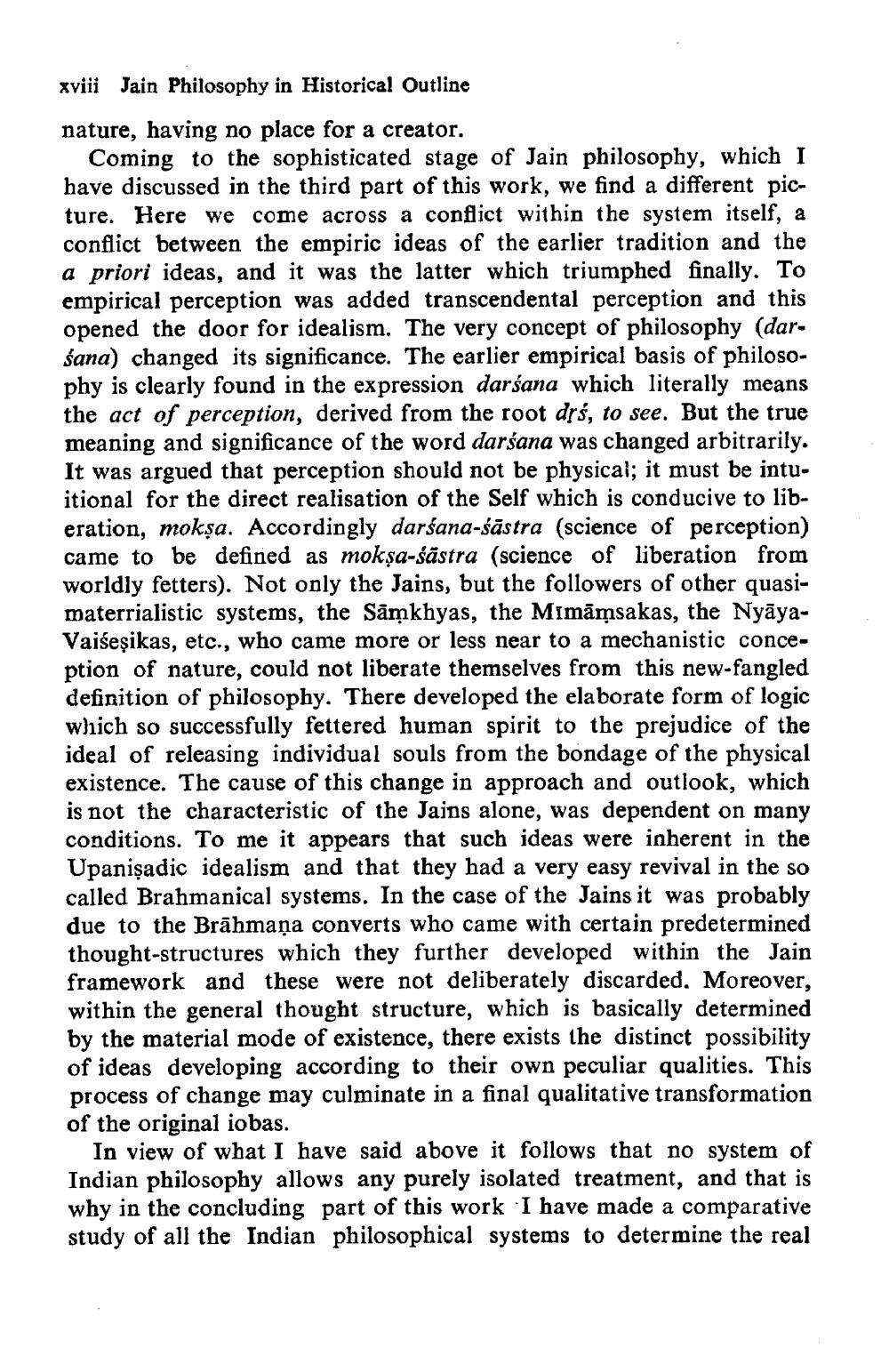________________
xviii Jain Philosophy in Historical Outline
nature, having no place for a creator.
Coming to the sophisticated stage of Jain philosophy, which I have discussed in the third part of this work, we find a different picture. Here we come across a conflict within the system itself, a conflict between the empiric ideas of the earlier tradition and the a priori ideas, and it was the latter which triumphed finally. To empirical perception was added transcendental perception and this opened the door for idealism. The very concept of philosophy (darśana) changed its significance. The earlier empirical basis of philosophy is clearly found in the expression darśana which literally means the act of perception, derived from the root drs, to see. But the true meaning and significance of the word darśana was changed arbitrarily. It was argued that perception should not be physical; it must be intuitional for the direct realisation of the Self which is conducive to liberation, mokṣa. Accordingly darśana-śāstra (science of perception) came to be defined as mokṣa-sästra (science of liberation from worldly fetters). Not only the Jains, but the followers of other quasimaterrialistic systems, the Samkhyas, the Mimāmsakas, the NyāyaVaiśeşikas, etc., who came more or less near to a mechanistic conception of nature, could not liberate themselves from this new-fangled definition of philosophy. There developed the elaborate form of logic which so successfully fettered human spirit to the prejudice of the ideal of releasing individual souls from the bondage of the physical existence. The cause of this change in approach and outlook, which is not the characteristic of the Jains alone, was dependent on many conditions. To me it appears that such ideas were inherent in the Upanisadic idealism and that they had a very easy revival in the so called Brahmanical systems. In the case of the Jains it was probably due to the Brāhmaṇa converts who came with certain predetermined thought-structures which they further developed within the Jain framework and these were not deliberately discarded. Moreover, within the general thought structure, which is basically determined by the material mode of existence, there exists the distinct possibility of ideas developing according to their own peculiar qualities. This process of change may culminate in a final qualitative transformation of the original iobas.
In view of what I have said above it follows that no system of Indian philosophy allows any purely isolated treatment, and that is why in the concluding part of this work I have made a comparative study of all the Indian philosophical systems to determine the real




